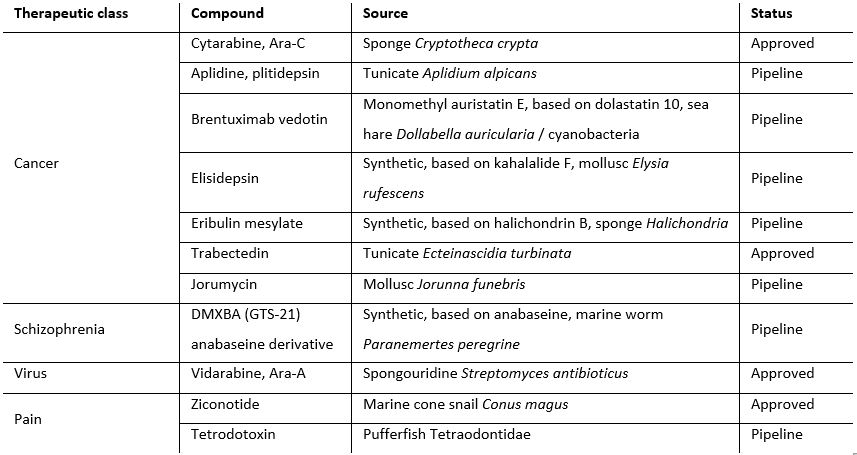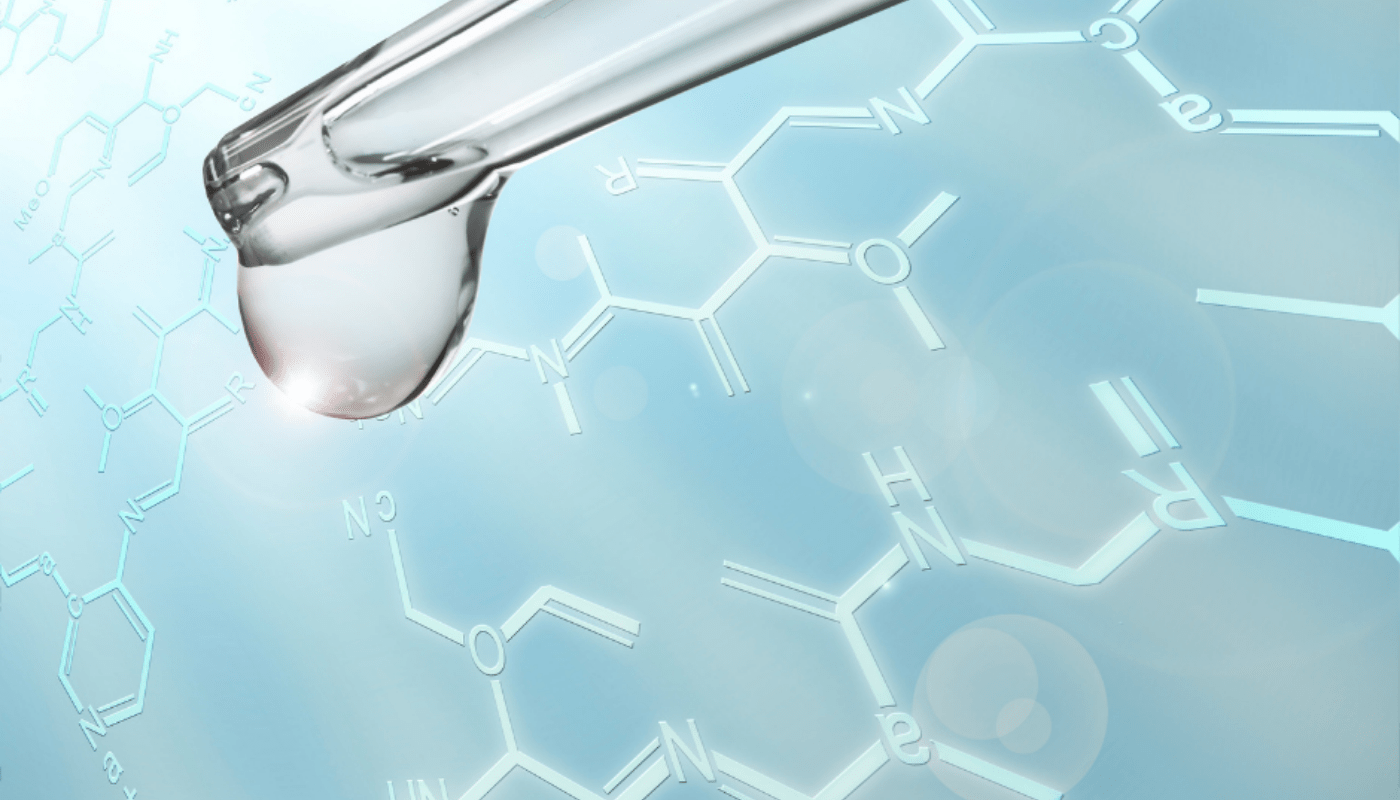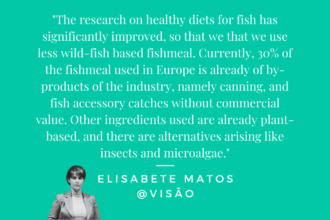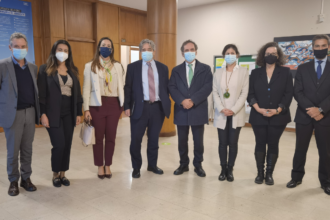Marine compounds in the pharmaceutical industry: overview, perspectives and B2E contribution
The ocean is the largest supply of potential drugs, with more than a million chemical substances discovered
Overview of the drugs from the sea
The ocean constitutes more than 70% of planet Earth and represents our planet’s largest habitat1. In this massive area, only 5% of the seabed has been in any way explored and less than 0.01% has been thoroughly studied1.
In the last decades, the marine environment has been the subject of great attention by researchers, as it is abundant in relevant compounds for many industries such as pharmaceutics, cosmetics or nutraceutics, among others2. This habitat is very competitive and aggressive, and therefore requires the production of potent active molecules that can be used to create vaccines, medicines, and supplements, including polyunsaturated fatty acids (PUFA), polysaccharides, minerals and vitamins, enzymes and bioactive peptides1. In addition, marine natural resources have an enormous diversity of molecular targets with marked selectivity, which enhances their pharmacological and therapeutic power1. Medicine has been exploring the benefits of marine organisms for thousands of years, as its secondary metabolites constitute a vast library with relevant bioactivity2.
The ocean is the largest supply of potential drugs, with already more than a million chemical substances having been discovered so far3.
Challenges and solutions in exploiting the ocean
While significant biological activities have been demonstrated for several health problems2, there are still many challenges in exploiting the potential of marine organisms for medicinal purposes, since the lack of accessibility to deep sea areas is a barrier to the collection, research and development of many extremely potent novel marine active components3. Furthermore, the fact that marine resources live under extreme conditions leads to variations in the metabolites produced3. However, techniques of reliable scuba diving have been improved, which has allowed an increasing collection of deep-sea marine organisms3. Also, the evolution of mariculture and aquaculture techniques, the optimization of screening programs and the development of scalable methods for obtaining and separating metabolites are factors that have been facilitating the use of these biomasses3. This has led to the large growth in the discovery of new marine products and their testing in clinical trials3. In addition, there is an increase in patent applications for isolated agents with therapeutic activity from marine microorganisms, phytoplankton, algae, sponges, cnidarians, bryozoans, molluscs, tunicates, echinoderms, mangroves and other plants3. Regarding patents related to marine natural products, approximately 200 for industrial applications were issued from 1969 to 1995, and 45 for therapeutic application were issued between 2015 to June 20183.
About marine organisms and bioactive compounds
Marine organisms are divided into marine bacteria, cyanobacteria, microalgae, macroalgae, marine fungi, marine invertebrates and marine fishes2. The study of these organisms significantly increased the amount of known natural products, and it plays an important role in the creation of new drugs and development of the pharmaceutical industry worldwide9. Marine compounds have already demonstrated several therapeutical activities including antibacterial, antiviral, antimalarial, anti-inflammatory, immunosuppressive, analgesic, antioxidant, antitumoral and as promotors of cardiovascular health1.
Pharmaceutical applications of marine bioactive compounds – a brief overview
It was in 1940 that the cephalosporin antibiotic class was discovered, with cephalosporin C, an antibiotic related to penicillin and produced from the Acremonium chrysogenum fungus, found in the Mediterranean Sea near Sardinia1 4. But it was only in the 1950s that the boom in the development of marine drug took place, marked by the discovery by Werner Bergmann of spongothymidine and spongouridine, derived from the Caribbean sponge Tectitethya crypta (formerly known as Cryptotethia crypta)2 9 10. It gave rise to Cytarabine (aka Ara-C, Cytosar-U®), the first marine-derived drug placed on the market, an anticancer which was approved by the USA Food and Drug Administration (FDA) only in 1969, for the treatment of leukemia8 10. Later, in 1976 Vidarabine was approved (Ara-A, Vira-A®), an antiviral drug derived from arabinose nucleosides isolated from the shallow water marine sponge Tethya crypta on the coast of Florida, for the treatment of Herpes simplex virus1 4 10. After that, for different reasons, such as the appearance of simple and economically viable synthetic combinations and the failure of some clinical developments, the investment by the large pharmaceutical companies fell at some point and caused scepticism in the scientific community to explore new marine natural products for drug development, lasting up to the end of the last century2 8. However, in the beginning of the 21st century marine drugs entered a time of renaissance, and marine inhabitants have become the main source of new chemical compounds, due to their biochemistry which results in distinctive secondary metabolites8.
There was a new milestone with the discovery and development of the green fluorescent protein derived from jellyfish by Osamu Shimomura, Martin Chalfie and Roger Tsien, research which contributed to them being awarded the Nobel Prize in Chemistry 2008. Later, in 2007, Trabectedin, extracted from the tunicate Ecteinascidia turbinate, was approved by EMEA for advanced soft-tissue sarcoma in 2007 and for ovarian cancer in 20092.
Table 1: Marine or marine-derived drugs approved or in the pipeline

There are also many marine-based excipients in the market. Examples of this are agar, derived from red algae Gelidium amansii; alginates, derived from brown seaweeds Laminaria hyperborean; carrageenans, derived from red algae of the Kappaphycus and Eucheuma genus; fucoidans, derived from brown algae such as Fucus vesiculosus and Sargassum stenophyllum and chitosan, derived from exoskeletons of arthropods and crustaceans5. Some of them, particularly alginates, are extremely important in drug manufacturing, since rarely have synthetic substances been discovered to replace them5. Moreover, marine collagen from fish has emerged as a versatile and sustainable resource, alternative to mammal collagen, due to its lower risk of transmissible diseases to humans, because it can be sourced from discards of the fish processing industry making the sector more sustainable6 and it is also free from ethical and religious concerns.
Marine Biotechnology these days
Large-scale marine biotechnology projects have recently been launched outside the EU (e.g., Norway, South Korea), while in the US, institutional funding has declined in recent years2. In the EU , the Horizon 2020 program has invested heavily in marine research and innovation, and there are several marine biotechnology projects underway based on drug discovery, e.g.: MAREX – Exploring marine resources for bioactive compounds: from discovery to sustainable production and industrial applications (2010-2014); BAMMBO – Sustainable production of biologically active molecules of marine origin (2011–2014); PharmaSea – Increasing value and flow in the marine biodiscovery pipeline (2012–2016); SeaBioTech – From the seabed to the test bench: harvesting the potential of marine microbes for industrial biotechnology (2012–2016)2. The French program ECIMAR studied marine chemical ecology as an indicator of biodiversity, and projects SPECIAL and SPONGES specialized in marine sponge research, while SWAFAX and HYFFI specialized in marine algae bioactive compounds2.
Obstacles for the pharmaceutical industry
One of the main barriers to drug development from marine organisms is the lack of permanent availability of enough quantities of compounds in the marine environment, guarantying sustainable use1 7. This has already halted the development of several highly promising marine compounds1. Another barrier is the fact that, most of the time, the compound of interest is present in small amounts and is difficult to isolate1 7, as is an example the extraction from marine invertebrates1. The difficulty in harvesting sustainably in a marine environment could be solved by farming marine organisms with optimal conditions7, exploiting mariculture and aquaculture1. However, it is still not possible to artificially cultivate many organisms of pharmacological interest, especially microorganisms, due to lack of knowledge of living conditions in the natural environment and adaptation to cultivation methods.
The co-cultivation of several organisms can be a solution in some cases, as it allows the mimicry of the complexity found in the natural environment1.
Genetic techniques to increase the yield of production of substances of interest have been optimized, to achieve the isolation and expression of genes from organisms that cannot be cultivated. As previously mentioned, there are several challenges in the identification, development, and commercialization of drugs.
However, there are numerous substances in pre-clinical and clinical trials phase for the treatment of various diseases, and here the class of antitumor drugs stands out.
It is still necessary to develop technologies that allow for the correct and meticulous assessment of the available biodiversity in the oceans to overcome the obstacles to the development of pharmaceuticals of marine origin. Advanced molecular techniques have allowed for the taxonomic and physiological characterization of organisms, and sampling techniques have been presented as a solution in accessing samples of organisms to facilitate the cultivation of marine species. However, there are still limitations in the knowledge of organisms and their metabolites for large-scale implementation of artificial cultivation1.
B2E’s role in the development of the sector
At B2E we operate as innovation enablers, bringing innovative ideas into maturation and higher valorisation levels across different markets, while establishing the necessary translation efforts between the Academic and Industry languages, therefore galvanising relationship between these sectors. B2E is strategically positioned to stimulate the sustainable development of the Portuguese Blue Bioeconomy, specifically acting in the marine biotechnology area, as well as aquaculture and valorisation of marine living resources. Among many related subareas, B2E is a valuable player for stimulating R&D in marine-based pharmaceutical drugs, acting as a bridge between Portuguese research national and international markets. In fact, for the three areas of B2E action we aim to stimulate the internationalization of the national scientific and technological capacity.
Our activity is leveraged not only by a team of multiskilled collaborators, but also by an invaluable network of associates that strategically cover the entire value chain of B2E’s operating areas – this fruitful interaction with our associates has been successful in propelling us into the spotlight and B2E’s name is starting to gain some traction. So, If you work in biotechnology and would like to boost your business, talk to us!
Conclusions: marine biotechnology as a key and growing sector
Every year, the number of known marine natural products increases2 8 9. Different factors, such as development of reliable scuba diving techniques and deep-sea equipment, human resistance to drugs, consumer preferences or the recognition of the advantages of marine biomass, have motivated the growing interest in the research of new alternative drugs from marine living resources in the last years2. It has encouraged the development of new drugs and has led the development of several clinical trials1. Marine invertebrates are one of the major groups of biological organisms that gave rise to secondary metabolites with pharmacological properties and led the formulation of novel drugs10. Compounds with possible activity in chronic diseases and/or untreated diseases are the most studied for the development of new drugs1. There is a growing investment in research and the emergence of small biotechnology companies exploring the commercialization of these products2, that can be harnessed with the help of B2E.
References
1. Machado, M., (2019) Organismos Marinhos como Fonte de Novos Fármacos. Thesis, University of Lisbon, Portugal.
2. Kiuru, P., D’Auria, V., Muller, C., Tammela, P., Vu0orela, H., Yli-Kauhaluoma, J. (2014) Exploring Marine Resources for Bioactive Compounds. Planta Med 2014. 80, 1234-1246. DOI: 10.1055/s-0034-1383001
3. Shindre, P., Banerjee, P., Mandhare, A. (2019) Marine natural products as source of new drugs: a patent review (2015-2018). Expert Opinion on Therapeutic Patents. 29, 4, 283-309. ISSN: 1354-3776 (Print) 1744-7674 (Online). DOI: 10.1080/13543776.2019.1598972
4. Sruthi, V., Grace, N., Monica, N., Kumar, V. (2020) Marine pharmacology: an ocean to explore novel drugs. International Journal of Basic & Clinical Pharmacology. 9, 5, 822-828. pISSN 2319-2003 | eISSN 2279-0780. DOI: 10.18203/2319-2003.ijbcp20201767
5. Sabalingam, S., Jayasuriya, W. (2019) Pharmaceutical Excipients of Marine and Animal origin: A Review. Biological and Chemical Research. 6, 184-196. ISSN 2312-0088
6. Salvatore, L., Gallo, N., Natali, M., Campa, L., Lunetti, P., Madaghiele, M., Blasi, F., Corallo, A., Capobianco, L, Sannino, A. (2020) Marine collagen and its derivatives: Versatile and sustainable bio-resources for healthcare. Materials Science & Engineering C. 113 – 110963. DOI: 10.1016/j.msec.2020.110963
7. Alves, A., Sousa, E., Kijjoa, A., Pinto, M. (2020) Marine-Derived Compounds with Potential Use as Cosmeceuticals and Nutricosmetics. Molecules. 25, 2536. DOI: 10.3390/molecules25112536
8. Dyshlovoy, S., Honecker, F. (2020) Marine Compounds and Cancer: The First Two Decades of XXI Century. Marine Drugs. 18, 20. DOI: 10.3390/md18010020
9. Stonik, V. (2009) Marine Natural Products: A Way to New Drugs. ACTA NATURAE. 2
10. Perdicaris, S., Vlachogianni, T., Valavanidis, A. (2013) Bioactive Natural Substances from Marine Sponges: New Developments and Prospects for Future Pharmaceuticals. Natural Products Chemistry & Research. 1, 3. DOI: 10.4172/2329-6836.1000114





